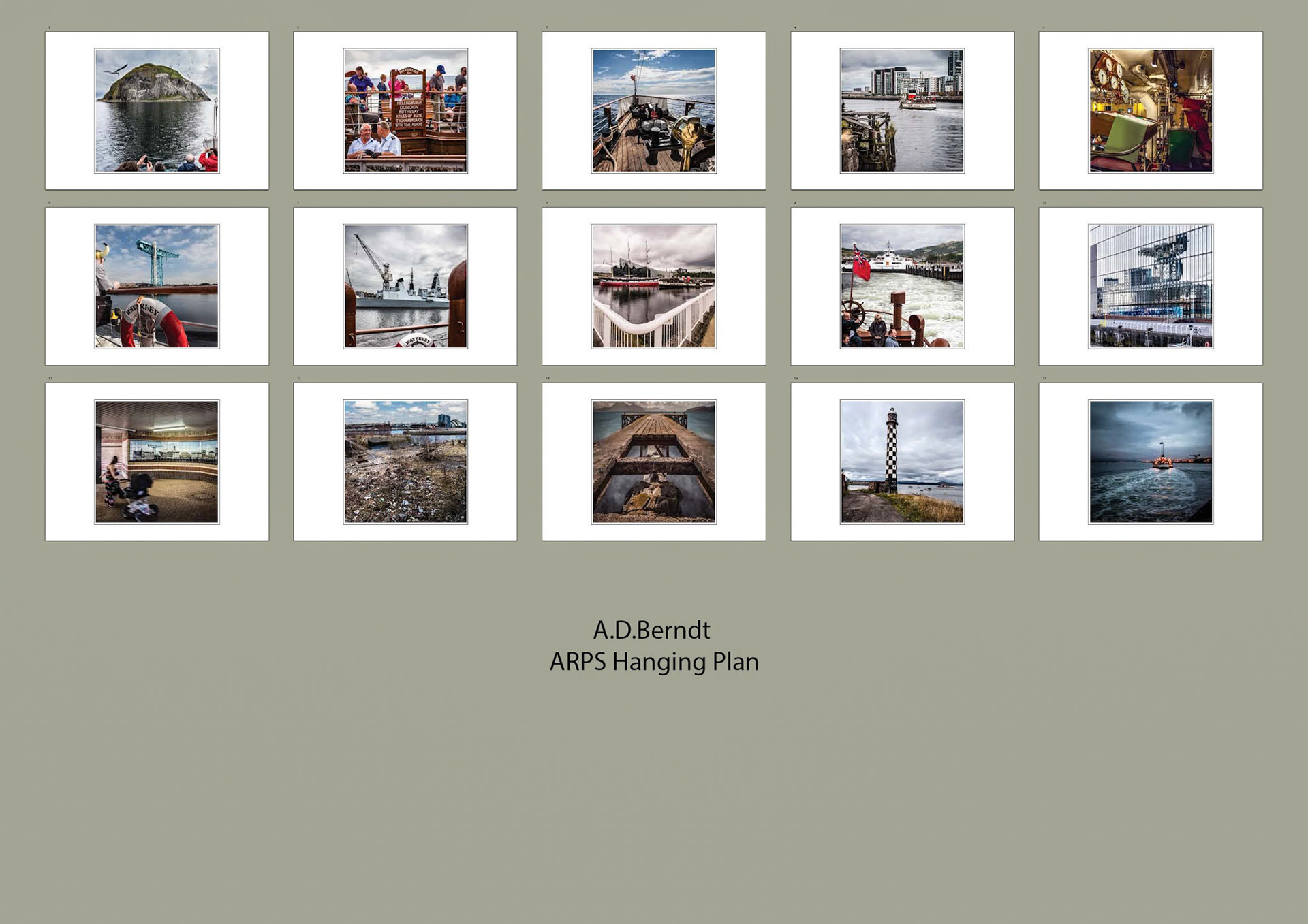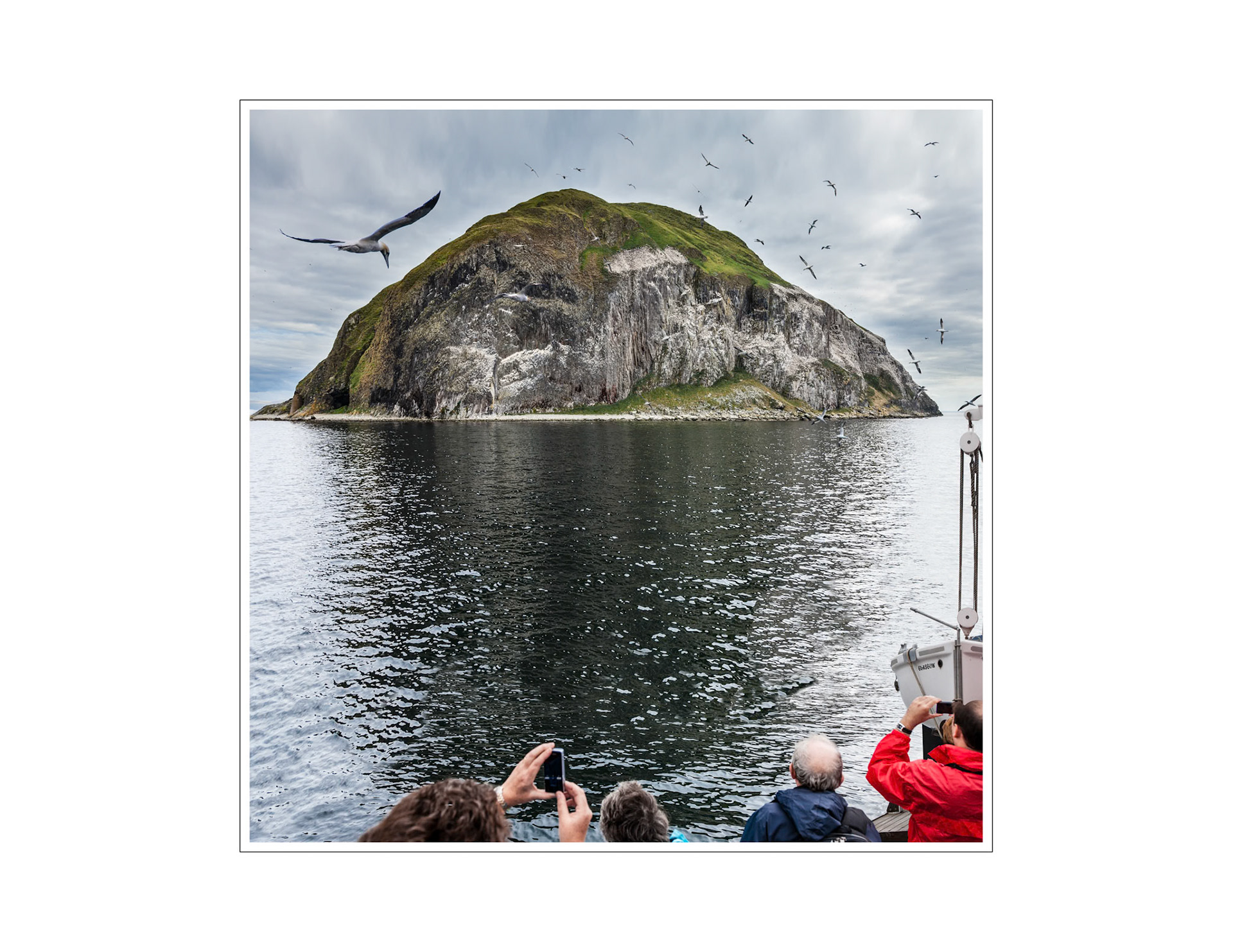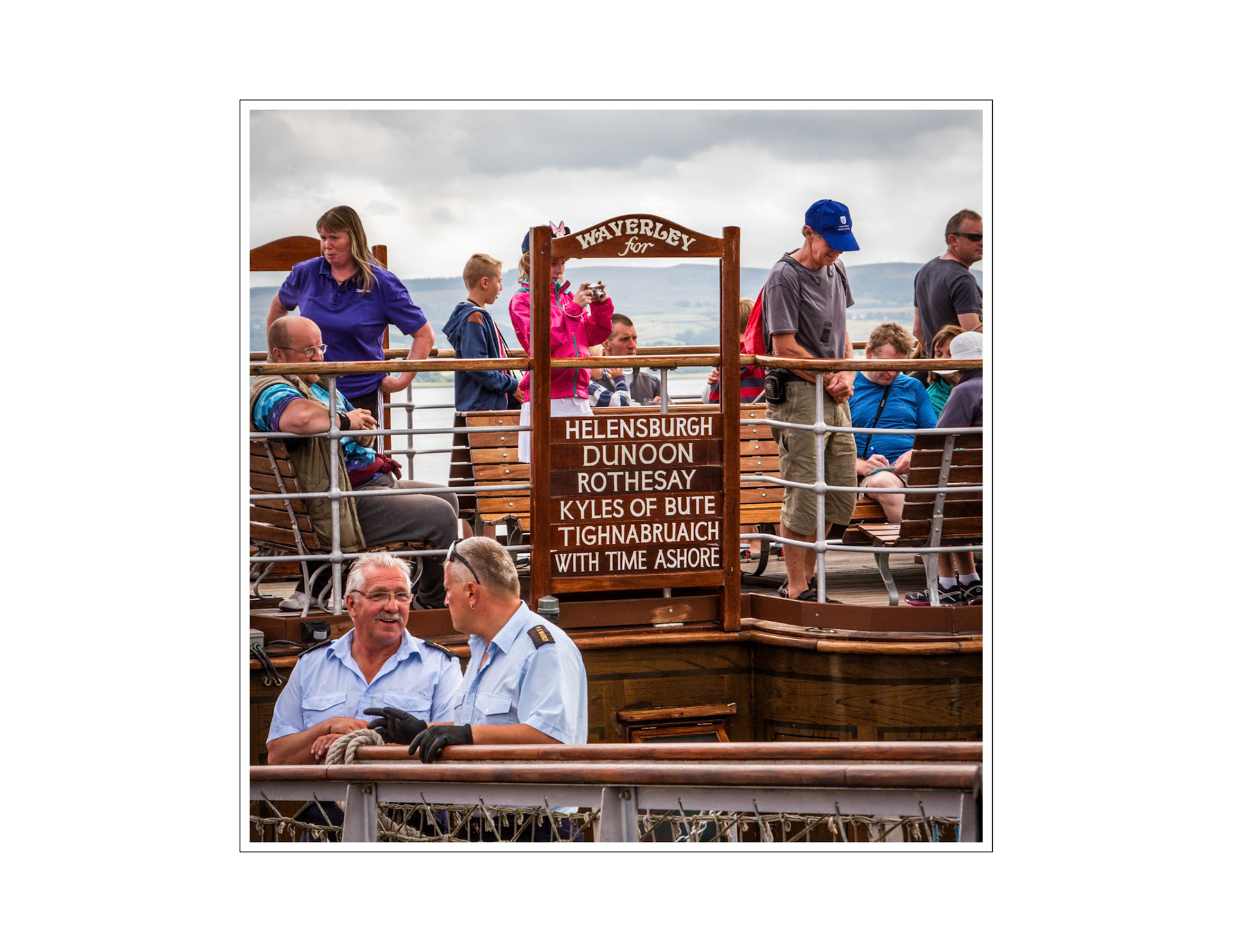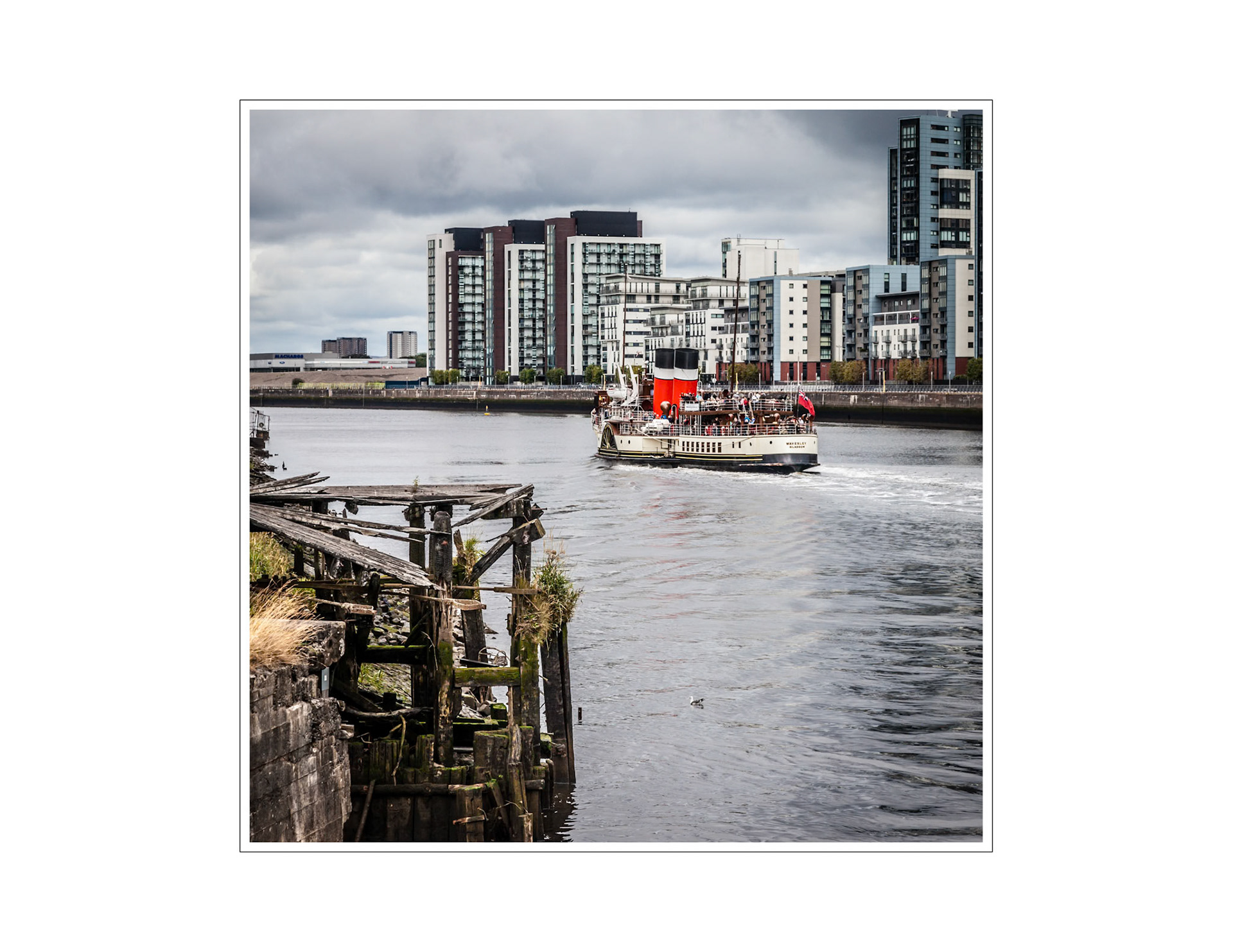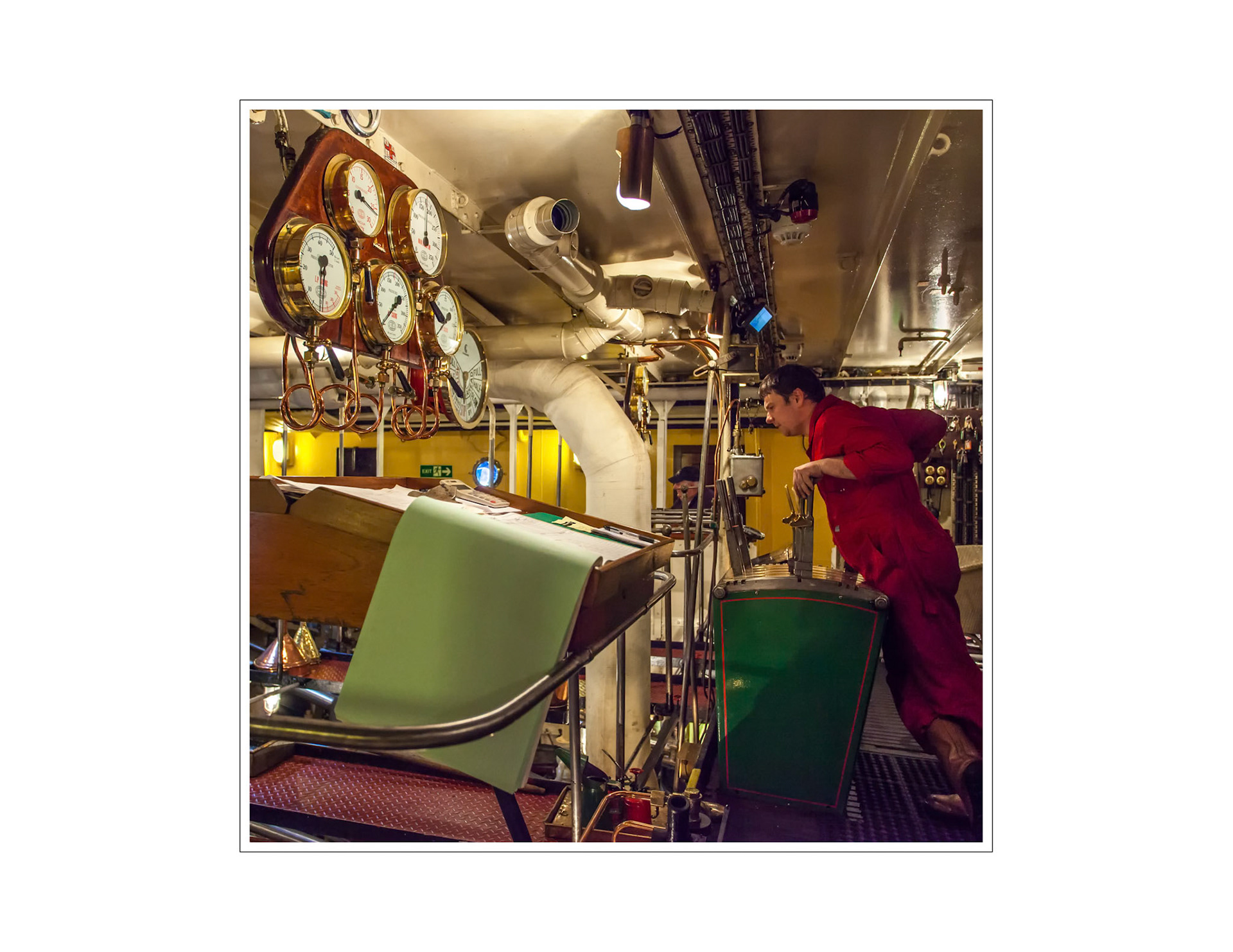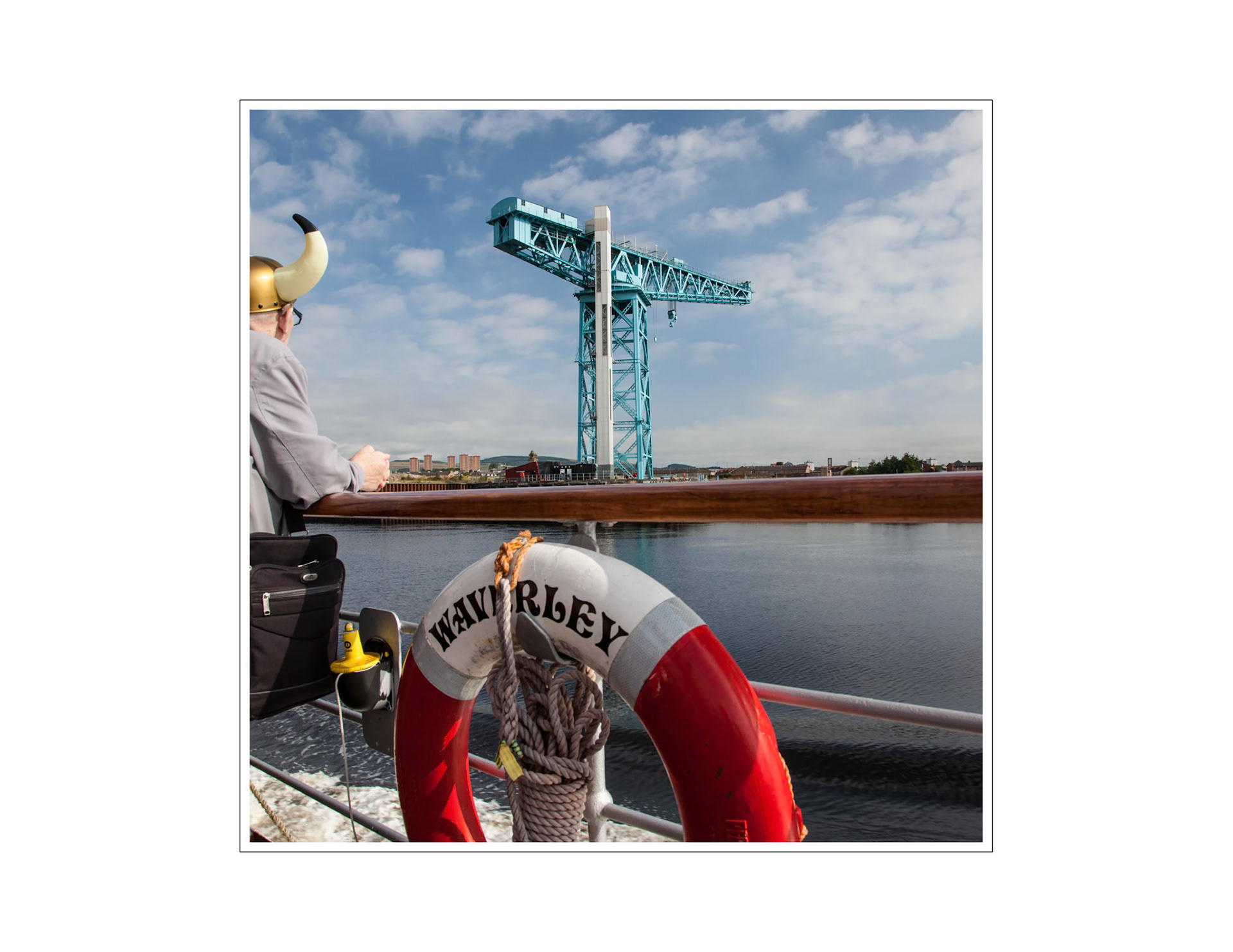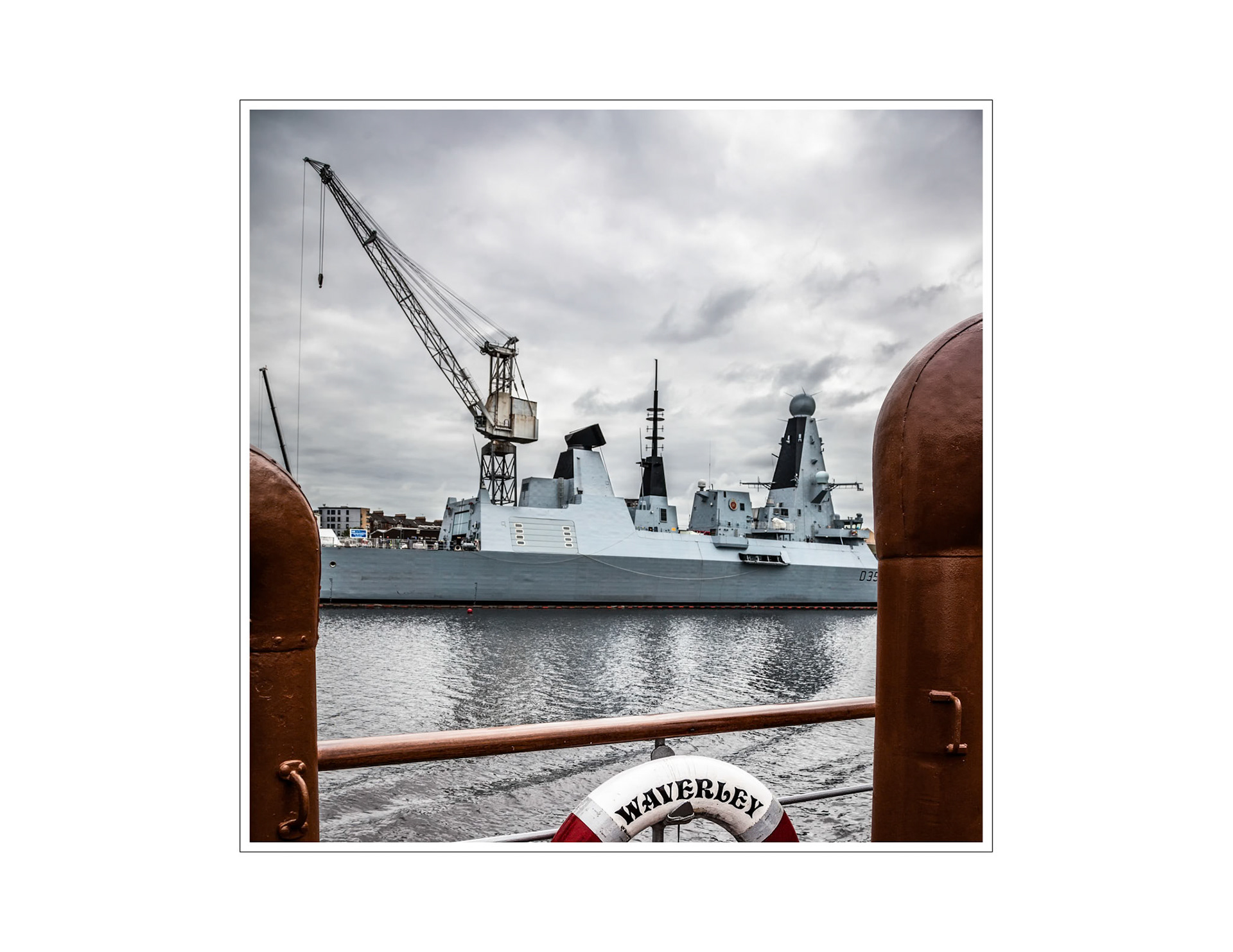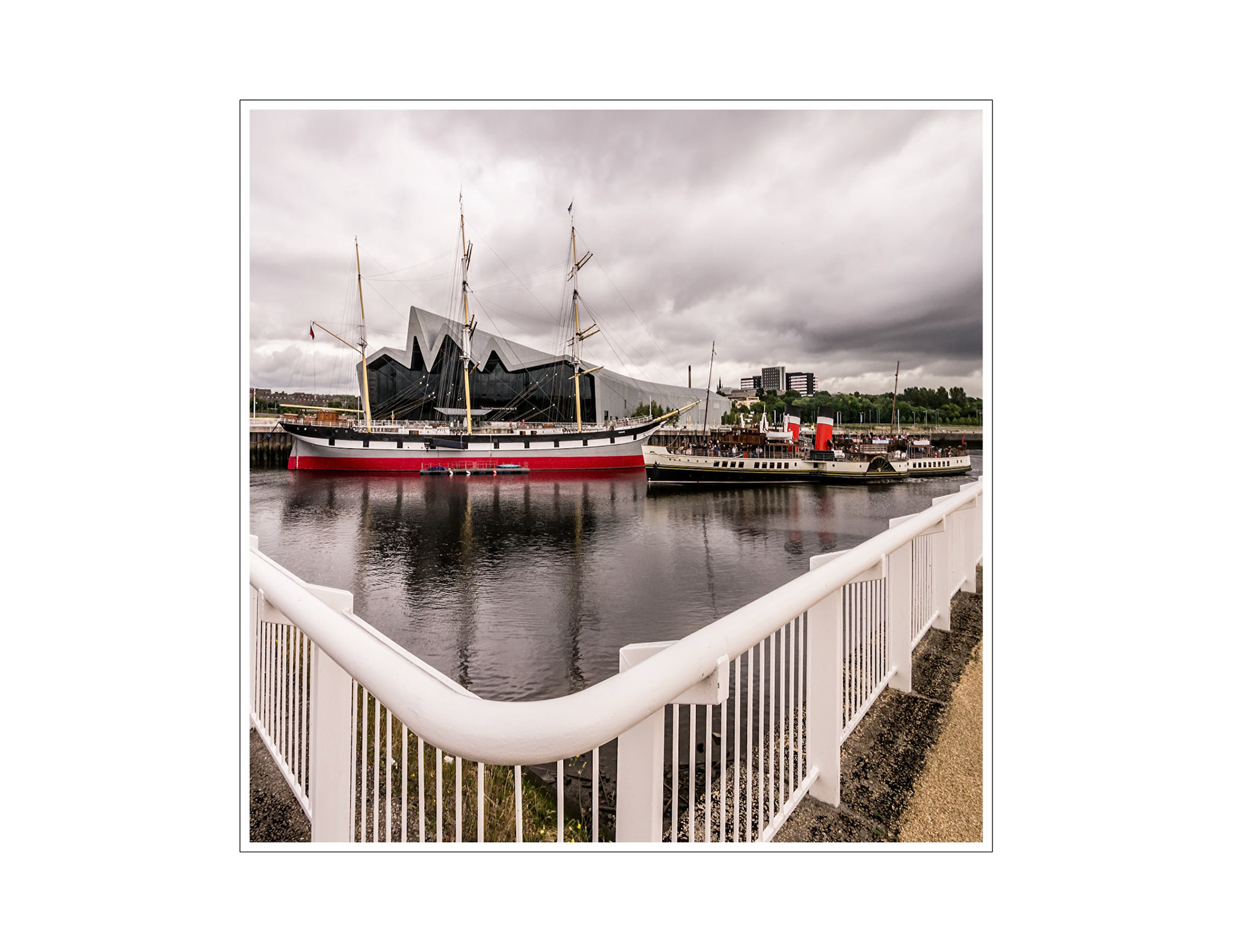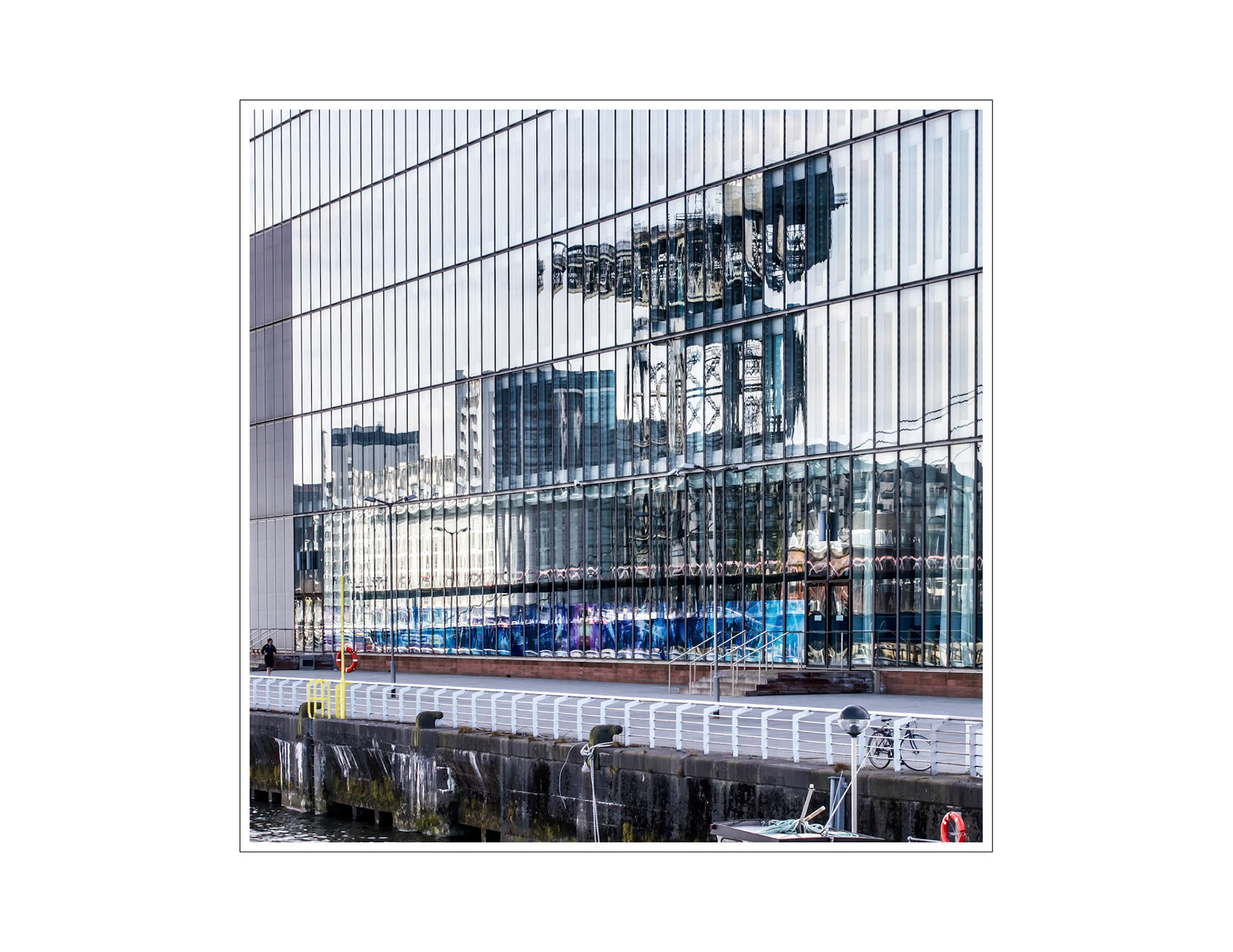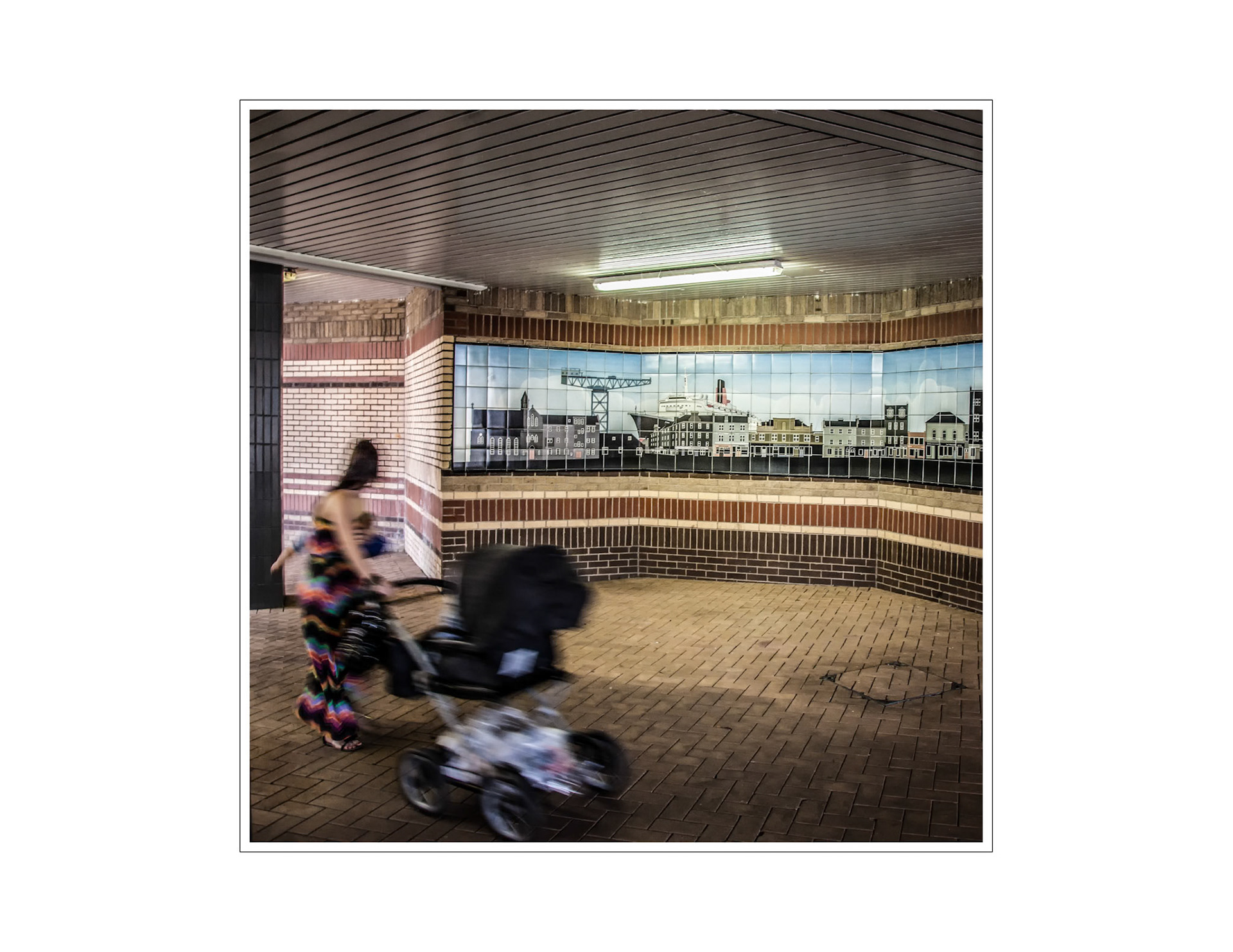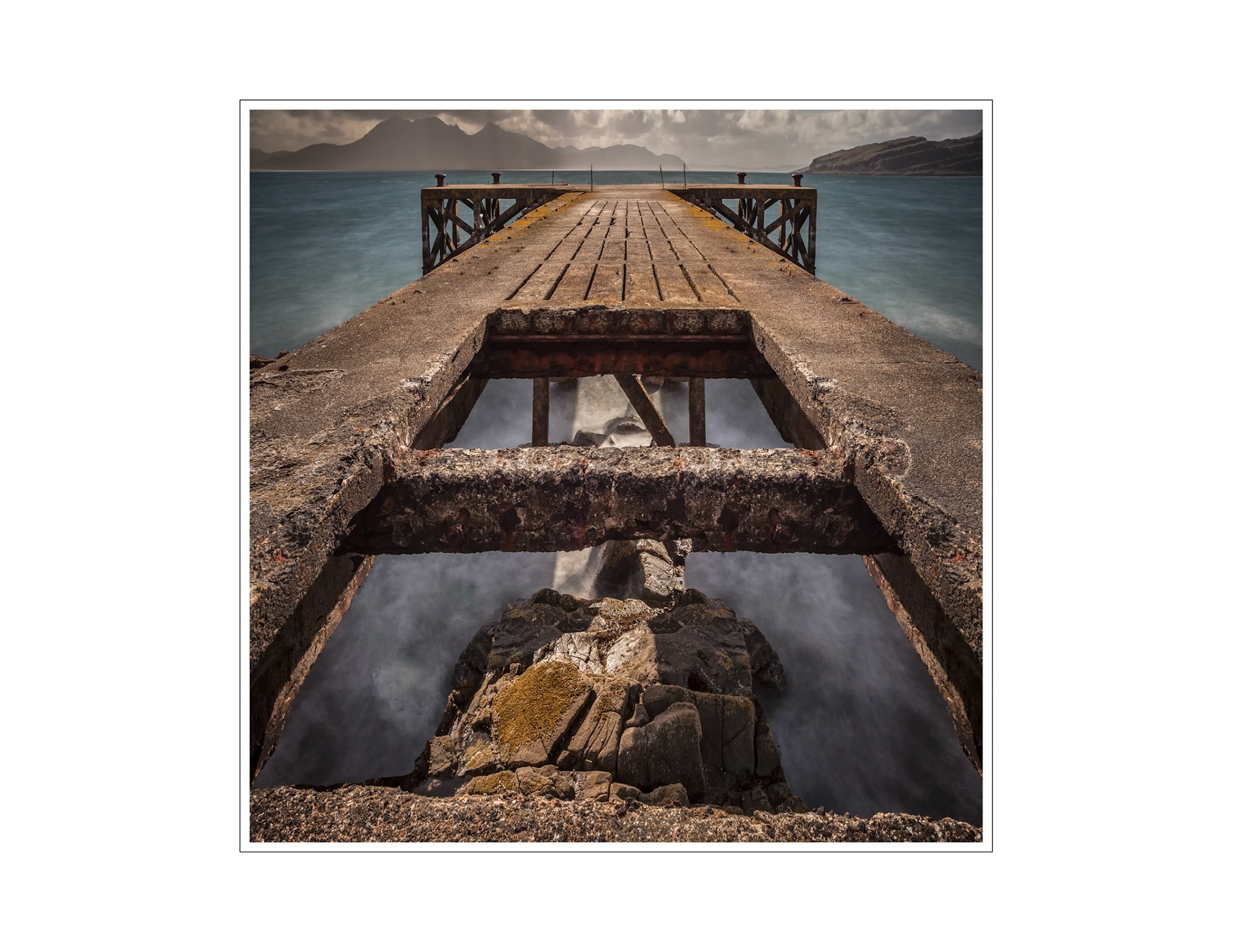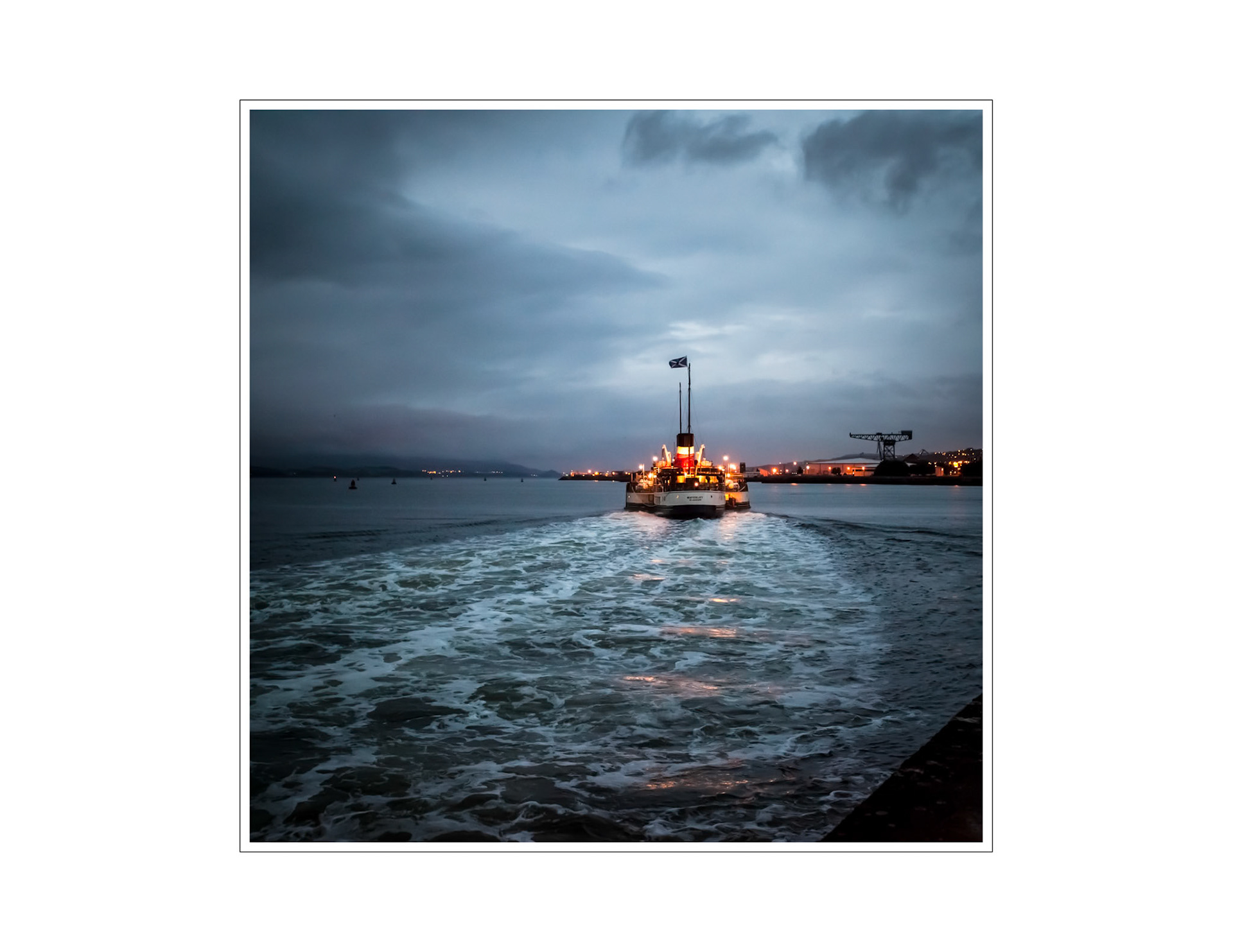The River Clyde – A Journey.
This on-going project began following an enjoyable trip to Ailsa Craig, a volcanic plug where the River Clyde meets the sea. My journey on Waverley, the only sea-going paddle steamer in the world, started at her Glasgow home. As we steamed down river I was struck by the legacy of Clydeside industry featuring both decay and renewal. Moving towards the open sea change was less obvious but here, in the absence of pleasure steamers, only those quays that serve ferry links to islands and remote corners persist. My project has led me to explore some of the Clydeside towns and shores to document aspects of this legacy which is revealed in relics and modern memorials.
Waverley is a tangible part of this legacy. Her current base at the Glasgow Science Centre is within view of her 1946 birthplace, now the site of Glasgow's Transport Museum and the three-masted barque, Glenlee. Waverley is now the only pleasure cruiser on the Clyde providing trips “doon the water”, once the annual break for thousands of shipyard workers and their families. Run as a charity, Waverley's vintage engineering and design provide further nostalgia for onlookers and passengers.
UK shipbuilding has seen heavy decline. The two remaining Glasgow yards produce only UK Royal Navy ships whilst the lone yard on the lower Clyde builds some Caledonian MacBrayne ferries, the life-line of the Scottish islands.
Many on Clydeside have pride in the efforts that made this small river world famous for Clydebuilt quality. Clyde launches averaged two a week between 1880 and 1990, the remaining Titan Cranes along the river are memorials to these efforts. The Category-A listed blue Titan marks John Brown's which built the famous Cunard Queens.
The river's heritage is there to be seen. I intend to document more of it.
